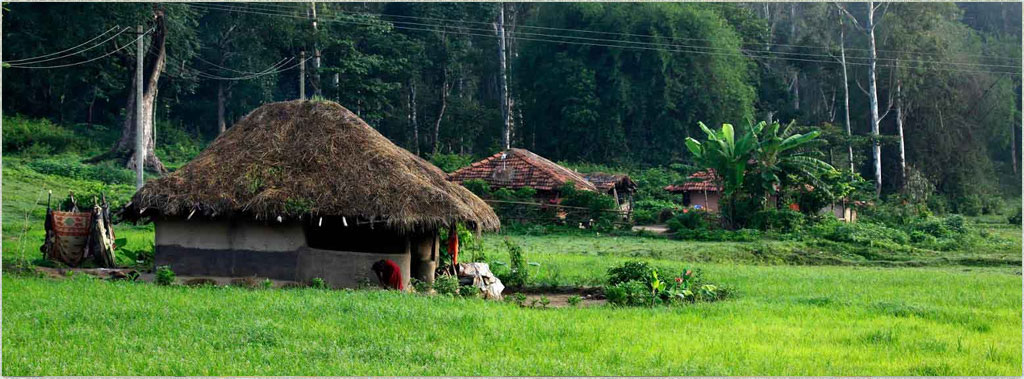Music is an art of sounds. Like language, music is an unique form of communication. But conversation takes place only when the speaker and the listener speak the same language. But language is not a problem to listen and enjoy the music. It is not easy to say when music began or from which cultures the music originated.
In tribal societies, music has an important role in religious rituals and serves as a form of communication with supernatural beings. Tribal of Kerala still follow the pre-Dravidian music.
Thudi is a musical instrument of Paniya and Adiya tribes of Wayanad in Kerala. The TRIBALS perform thudi and Kuzhal and the Nellukuthu Pattu is peculiar to the Kurichias while Adiyas perform Gadhika and Kurumas are masters at Kolkali.
Thudi stands between Udukku and Idakka in terms of size. Though not a “kshetravadya” (percussion instrument used in temple), it is used as accompaniment for “aandi nritham”, a ritualistic dance performed in Devi temples. In the past, members of the Panar community used it for the “thuyilunarthupattu” during the Onam festival season.
The two membranes on either sides are large in size while the middle portion of the trunk is slim. Skins are stretched over the metal rings fitted to either sides. They are fastened with laces that are inserted through the holes on the rings. The instrument is played on one side by suspending it from the shoulder of the artist. The tension of the skin is adjusted with the help of the lacing.
The body of the thudi typically is made of jackfruit tree and dried skin of dear. it is an integral part in festivails and weddings were the new member of the family is welcomed to the house while the thudi is beaten in loud volumes. the sound of thudi is believed to eradicte negative energy and create a positive atmosphere.







